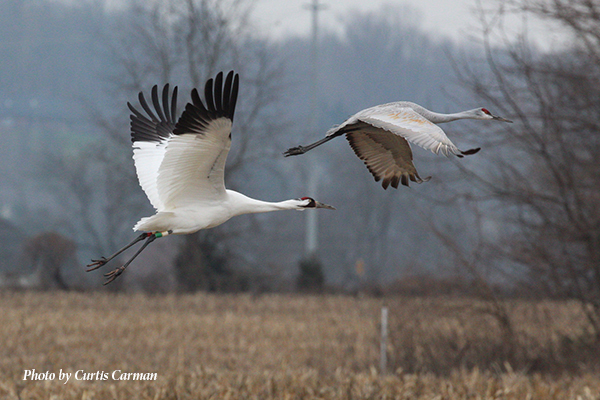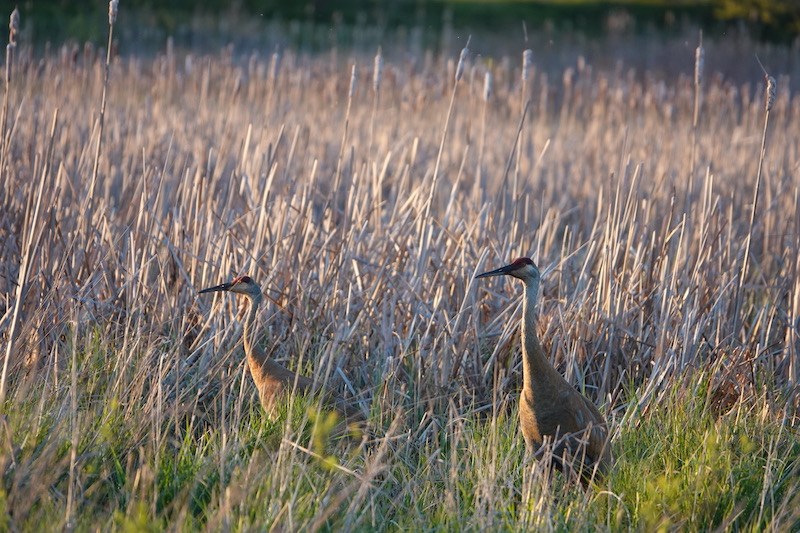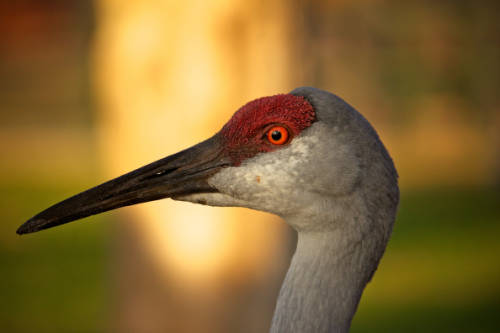WSO administrative assistant Rebecca Gilman delivered this statement at an Oct. 19 hearing of the Wisconsin Senate Committee on Sporting Heritage, Small Business and Rural Issues:
The Wisconsin Society for Ornithology, a statewide organization with over 1,100 members whose mission is to promote the study, enjoyment and conservation of Wisconsin’s birds, opposes Senate Bill 620.
Sandhill Cranes are magnificent birds, beloved by residents of Wisconsin and tourists alike. Their recovery from near extinction was a long and arduous process, requiring collaboration between researchers, conservation organizations and wildlife managers. These stakeholders, along with the citizens of Wisconsin, deserve an opportunity to gather the facts and the science in response to Senate Bill 620. Instead, what we have here is a piece of legislation that is being fast-tracked with scant opportunity for comment by the conservation community. A decision to hunt Sandhill Cranes, especially in this bird’s breeding and staging area, requires careful consideration, not quick action.
Our organization was formed in 1939 by ornithologists and amateur birdwatchers alike. WSO’s logo and flagship publication feature the image and name of the Passenger Pigeon – a game bird hunted to extinction during the 19th and early 20th century. Our logo is a call to protect other bird species from extinction. The growth of WSO parallels the recovery of Sandhill Cranes in Wisconsin. At the time this organization started, only 25 breeding pairs of Sandhill Cranes could be found in our state. It has taken nearly a century to rebuild their population to sustainable levels. WSO is concerned that a Sandhill Crane hunt will mean a reversal of the incredible gains that have been achieved over decades of concerted effort.
WSO understands that with the increase in Sandhill Crane numbers has come an increase in crop damage for Wisconsin’s corn growers. But hunting cranes in the fall is not the solution to this problem. In the late summer and early fall, Sandhill Cranes from the Eastern Migratory Flyway – which includes Wisconsin, Michigan, Minnesota, Southern Ontario and Quebec – leave their breeding territories and gather at staging areas in Wisconsin before flying south. A fall hunt of these migrating birds may have little to no effect on the cranes that feed on farmers’ fields in the spring, but it may pose a significant risk of overharvesting the Eastern population.
This risk is exacerbated by the slow reproduction rate of Sandhill Cranes. Unlike other game species, Sandhill Cranes must reach 4 to 5 years of age before they nest. They lay only two eggs a year and typically only one of those hatchlings successfully fledges and survives for more than three years. Senate Bill 620 would be the first authorization of hunting Sandhill Cranes on their core breeding ground. Such a hunt could lead to a sharp decline in the population of this slow-to-rebound bird.

Photo by Curtis Carman for ICF
Since the establishment of the Eastern Migratory Population of Whooping Cranes in 2001, at least 1 in 10 deaths was caused by shooting. This has clearly delayed the success of the reintroduction, and a Sandhill Crane hunt would likely increase the risk further.
Finally, WSO is deeply concerned by the potential confusion of Sandhill Cranes with the endangered Whooping Crane. At last count, there were only 80 Whooping Cranes in the Eastern Migratory Flyway population. Since the establishment of this population, at least 1 in 10 deaths has been caused by shooting. Assurances and training aside, accidents do happen. In Wisconsin, we have seen hunters shooting elk that are mistaken for deer, severely hampering elk conservation efforts. We cannot let this happen to the Whooping Crane.
For all these reasons, the Wisconsin Society for Ornithology opposes Senate Bill 620.
Thank you for your time and your consideration.



